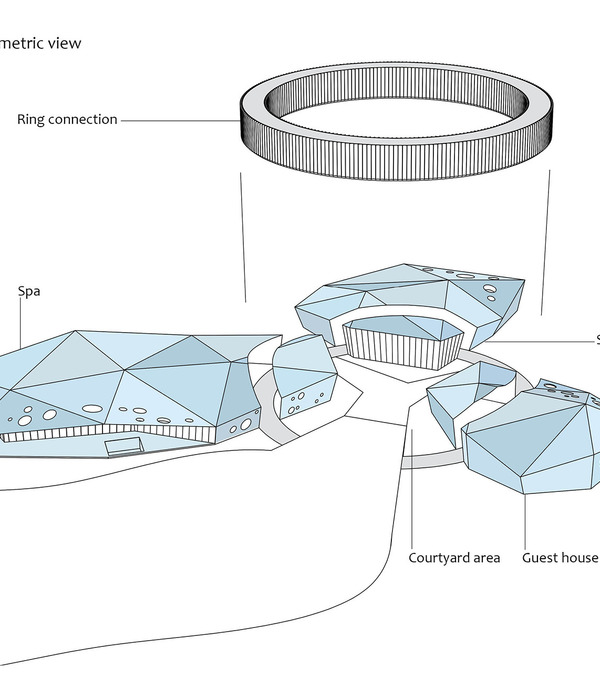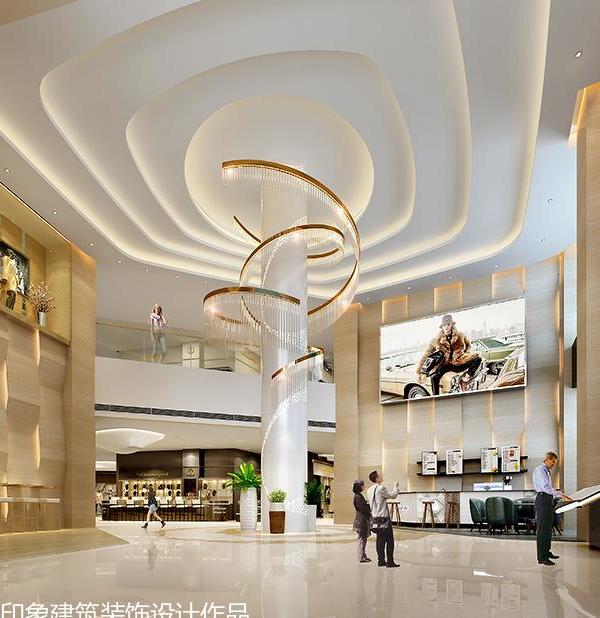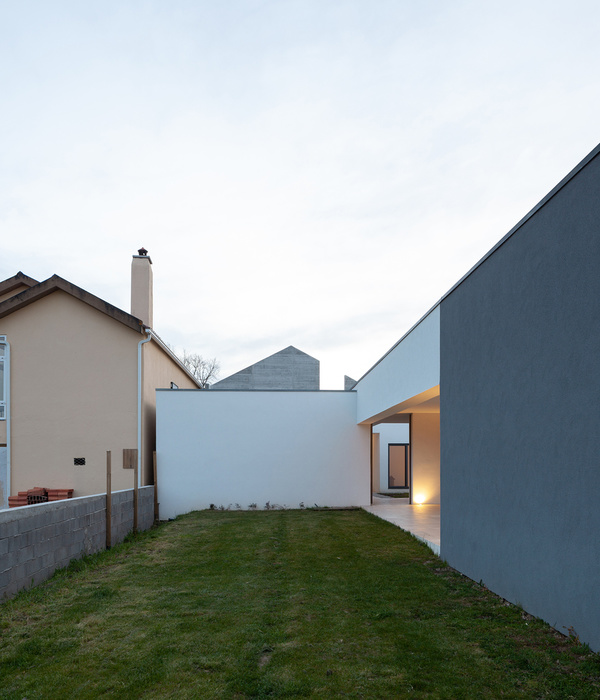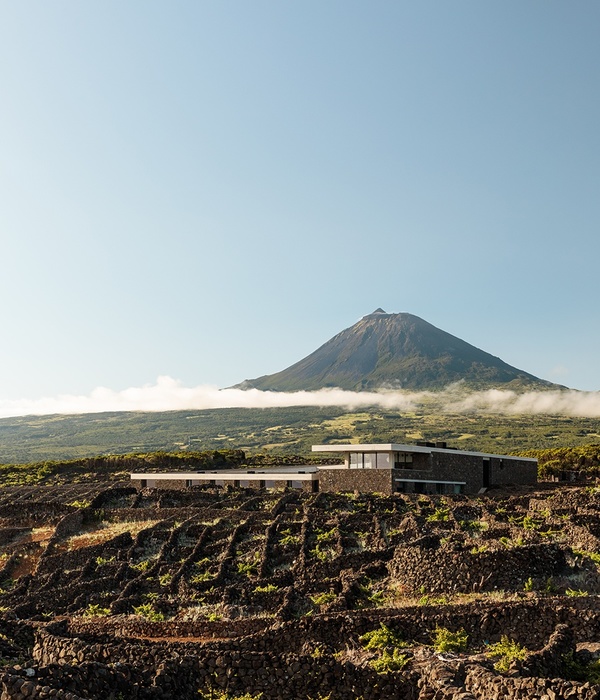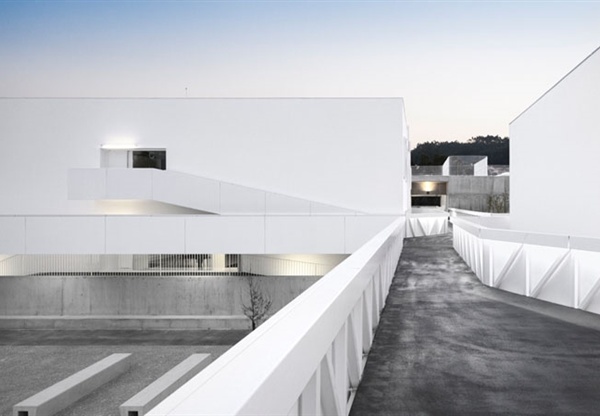- 项目名称:汤山星空餐厅
- 项目类型:文化建筑
- 设计时间:2017年8月-2018年3月
- 建成时间:2020年5月
- 业主:南京汤山建设投资发展有限公司
- 设计单位:MENG建筑创作院(深圳市建筑设计研究总院有限公司)
- 合作单位:东南大学建筑设计研究院有限公司
- 施工单位:中国建筑第八工程局有限公司
- 主创建筑师:孟建民
- 设计团队:杨旭,李优,章骁,吴命
- 摄影师:孔辰承
距离南京市区20公里的汤山矿坑公园,是原江宁县龙泉采石场留下来的几个采石宕口的采石场,废弃多年,成为城市中的一道“伤疤”。2017年,汤山围绕“城市双修”试点工作,对矿坑的环境进行了专项生态修复以及功能置换,希望打造一处供人游憩的矿坑公园。
Tangshan Quarry Park, 20 km away from downtown Nanjing, was formerly a quarry site with several remaining pits of Longquan Quarry in Jiangning County. The quarry site, abandoned for many years, has become a “scar” in the city. In 2017, as response to the pilot program of “City Betterment and Ecological Restoration”, Tangshan launched the ecological restoration and functional replacement project to improve the environment of the quarry site and create a quarry park for tourists.
▼修复后的汤山矿坑公园,Tangshan Quarry Park (after restoration) ©孔辰承
在公园主入口处的湿地区,围绕着保留池塘布置了三组建筑,用于游客的向导、休憩及用餐。游客中心位于池塘西侧,与主入口广场相连;茶室隔水相望,位于相对安静的池塘东侧,与游客中心通过一湖心栈道相连;而餐厅则位于池塘北侧的小山丘之上,山丘由当年的采石渣土堆砌而成,高差大约15米,其下密布着一些自然乔木。
In the wetland area at the main entrance to the park, three building clusters are planned around a reserved pond for the purpose of way-finding, relaxation and dinning of tourists. On the west of the pond stands the tourist center to connect the main entrance square. Across the water on the relatively quiet east side of the pond is a tea house, which is connected to the tourist center via a walkway over water. On the north of the pond is the restaurant, sitting on a small hill built with quarry refuse. The hill, with a height difference of 15 m, is densely surrounded with some wild trees.
▼建筑群落,Building cluster ©孔辰承
在自然场地的相对制高点上去设计一座小建筑,是许多建筑师的兴致所在。大家的处理手法各有千秋,有自成体系的博塔山顶小教堂,有手法纯粹的卒姆托水滴教堂,有些则希望消隐,将体量完全融入环境,如安藤忠雄设计的地中美术馆。不同的处理方式是建筑师对于自然环境的不同思考和表达。
Many architects are interested in designing a small building at a relative vantage position of a natural site. They respond with different design solutions, such as Botta’s mountaintop chapel with a self-sustained system, and Zumthor’s waterdrop-shaped chapel in a concise style, but some choose to dissolve and completely permeate the building volume into the environment, such as Tadao Ando’s Chichu Art Museum. Different solutions reflect architects’ different way of thinking and expression of the natural environment.
▼龙泉采石场原状, Longquan Quarry Site (before restoration) ©MENG建筑创作院
▼建筑位于15米高的小山丘,The building stands on a hill 15 m high ©MENG建筑创作院
我们希望在自然环境中植入清晰可识别的形态,使得人们在远处即可辨识到公园的方位,也将人们的聚焦点由矿坑裸露的岩体转向建筑。建筑根植于小山丘之上,我们希望利用其高差,形成公园主入口空间的视觉焦点,与其它两组建筑形成“看”与“被看”的关系。这种处理手法,类似于古典园林中“阁”的布局关系。在皇家园林——颐和园中, “佛香阁”位于主轴线上,虽建于万寿山的山腰处,但其顶部却超出山顶,不仅在高度上,且在体量上也是能作为控制全园的中心建筑。而在布局相对自由的私家园林——拙政园中, “浮翠阁”位置虽位于园区西北角,但其被承托在假山之上,仍作为最高点,控制全园的空间布局。因此,在矿坑公园的入口山丘上,设置一个凸出山体的标志物,从而使场域具有清晰的辨识度,是我们对于这块场地的初步设想。
▼置入凸出山体的辨识物,A highly recognizable element implanted into the hill ©MENG建筑创作院
Our goal is to create a highly recognizable image within a natural setting, making the park location visible even from a long distance and diverting visitors’ attention from the exposed rocks of the quarry site to the buildings. The hilltop building creates a visual focus at the main entrance as result of the height difference and establishes a relationship of “seeing” and “being seen” with the other two building clusters. This resembles the way to locate “pavilions” in classical Chinese gardens. In the Summer Palace, an imperial garden, “Pavilion of the Buddhist Incense”, is place on the main axis. Though it is built on the hillside of Longivity Hill, its top is higher than that of the hill, making it the central building dominating the garden not only in height but also in volume. In the Humble Administrator’s Garden, a private garden with a relatively free layout, the “Floating Green Pavilion”, though placed at the northwest corner, still dominates the entire garden as it reaches the highest level standing on top of an artificial hill. Likewise, our preliminary intention is to create an iconic image on top of the hill at the park entrance to make the site highly recognizable.
▼布景式关系,Landscape setting ©孔辰承
由于场地空间缺乏方位感,在建筑布局之初,我们就在寻场地与城市、建筑与建筑之间的方位关系。巨大尺度的矿坑宕口和汤山度假区相对低矮的城市空间形成巨大反差,这种反差让二者产生了一种布景式关系——矿坑宕口作为幕布,位于宕口之下的建筑作为展品,进入公园的游客则成了台下的观众,这为我们的方位设计提供了第一层指向性。而在公园入口场所的营造中,虽然三组建筑和湖泊的布局是相对自由的,但其构成的三角形空间格局和高差关系本就暗示着某种指向性。因此,我们希望呼应场地的内在轴线,将空间关系明晰化,为场地寻找中心感。
▼寻找场地的方位感,Way-finding at site ©MENG建筑创作院
As response to the poor way-finding at site, we studied the relative locations between the site and the city, and between the buildings when we started to work on the building layout. The gigantic quarry pit and the relatively low urban space in Tangshan Resort forms a sharp contrast, which offers a landscape setting where the quarry pit serves as the backdrop while the buildings as the exhibits, and tourists in the park as audiences. This offers the first clue for our layout design. In the spatial design of the park entrance, although the three building clusters and the lakes are relatively free-flowing in layout, their triangular spatial pattern and height difference, in fact, also indicate a certain sense of orientation. By doing so, we intend to echo the inherent axis of the site, make clear the spatial relations and identify the heart of the site.
▼方位感,Sense of way-finding ©孔辰承
餐厅的功能组成并不复杂,根据其使用属性,我们将其分为“后勤区”、“就餐区”和“眺望塔”三个体量,意在尺度上控制建筑的体量。 后勤区位于底层,将原本不具备承载力的矿坑渣土置换成混凝土承台,作为餐厅的厨房、设备及管理部分。眺望塔是组织建筑的交通枢纽空间,也是厨房油烟井道的设备中枢。同时,它划定了公园的空间节点,为游客提供方位识别的焦点和登高远眺的空间。就餐区是建筑的核心功能空间——餐饮和游览空间。我们将就餐区设置成U字形回廊,以强化空间的方向性。同时,U字形空间能够为使用者提供最大化的观景视野,并界定游览的回廊路径。
▼体量构成与消解,Building volume composition and dissolution ©MENG建筑创作院
Functionally, the restaurant is not complicated. According to its intended uses, three building volumes are envisioned respectively for the BOH area, the dining area and the viewing tower, so as to achieve appropriate building scale. The BOH area is on the ground floor, where the quarry sludge without sufficient bearing capacity has been replaced with a concrete platform to serve as the kitchen, and the equipment and management areas of the restaurant. The viewing tower, which also serves as the building’s transportation hub and the kitchen’s fume shaft spine, defines the spatial node of the park, and provides visitors a way-finding focal point and a place to enjoy the attractive views at a height. The dining area is the core functional space of the building, the space for dining and sightseeing. It is designed into a U-shape corridor to enhance the orientation of the space. Meanwhile, the U-shape space also maximizes the view and defines the tour route for tourists.
▼餐厅室内,An interior view of the restaurant ©孔辰承
不同于相对稳定的建筑场地与体量关系,如何结合现状的自然山势,为建筑赋予某种动能,同样是所我们关注的。顺应自然山体的动势,我们将主体建筑进行一定角度的前倾,并将U字形回廊向外推出一定距离,形成巨大悬挑空间,刻意制造失重感和运动感。与此同时,我们将底层“承台”向反方向拉动,结合高塔实体的联系,达到结构上动态与稳态的平衡,从而使得场域充满动感。
▼体块错动带来的动势,Dynamic sense brought by staggered volumes ©MENG建筑创作院
Instead of a relatively stable relationship between site and building volume, we seek to inject some dynamic into the facility following the topography of the hill. To do so, the main building is slightly tilted forward and the U-shape corridor is pushed outwardly to form a huge cantilevered space, intentionally bringing out a sense of weightlessness and motion. Meanwhile, the platform on ground floor is pulled towards the opposite direction, which, together with the physical connection with the high tower, balances the dynamic and stability in structure and realizes a highly energetic project site.
▼动势,Dynamic sense ©孔辰承
视觉上,建筑的进入路径是人们体验建筑的主要方式。在公园的整体规划之下,驾车来访的游客由西侧的车行道缓行而至。而位于东侧的人行路径则更加丰富一些。人们从游客中心出发,穿过湖心岛,经过茶室,再顺着山丘的“之”字形栈道爬坡而上,便可到达餐厅的入口广场。东北侧的矿野拾趣乐园则提供另一个进入方式,人们在体验攀爬、滑梯等游乐设施之后,便可沿着游乐场地行至餐厅。游乐区与餐厅前广场由一片石笼墙进行分隔,既是作为动静区的划分,也是作为入口广场的标识与限定。顺着石笼墙拾级而上,通过一道微微拱起的连桥,由此进入主空间轴线序列。
▼抵达场地的丰富路径,Varied paths leading to the site ©MENG建筑创作院
Visually, the access to building provides a major means for people to experience the building. Subject to the master planning of the park, tourists arriving by car may slowly approach the building from the western road, while pedestrians can access the building via more diversified paths. They may start from the tourist center, walk through the island on water, go past the tea house, and then follow the zigzag path up the hill to reach the entrance square of the restaurant. The Mining Park on the northeast offers alternative access to the restaurant. People may experience fun climbing, riding slides and other amusement facilities in the amusement area before walking to the restaurant. A gabion wall between the amusement area and the front square of the restaurant separates the noisy space from the quite one, serving as the sign and boundary of the square. One may ascend the stairs along the gabion wall and pass a slightly arched bridge before approaching the main spatial axis of the project.
▼公园入口,Park entrance ©孔辰承
▼滨水栈道,Waterfront pier ©孔辰承
作为一栋公园内的餐饮建筑,我们力求赋予它更多的公共属性,希望它不仅被作为就餐空间使用,而可以对更多人群开放,成为公众休憩观景的平台。因此,我们在U字形回廊外侧设置一圈挑台,虽然可能会影响就餐空间的体验,但能为公众游客提供了一条宝贵的环游路径,避免餐厅成为公园游览路径的尽端。人们即使不进入建筑,也可以从主入口一侧环绕建筑一周,在距离公园入口300米、高15米的挑台,俯瞰公园景色。餐厅屋顶和塔楼顶层则相对开放,为游客提供远眺城市景观的场所。
For this F&B facility within a park setting, we intend to maximize its public nature, so that it can be open to more people and serve as a public resting and viewing platform instead of a mere dining space. To this end, we plan a platform overhanging along the U-shape corridor. Though this might kind of affect the experience of the dining space, it does offer a valuable tour path for the general public and makes the restaurant no longer the dead end of the tour routes. Without entering the building, people can tour around the building from the main entrance and overlook the park on the 15m-high platform 300m away from the park entrance. The roof of the restaurant and the top floor of the tower are relatively open, offering ideal places for tourists to enjoy a distant view of the city.
▼草坡,Grass slope ©孔辰承
▼山腰处回望,View from hillside ©孔辰承
▼入口平台,Entrance platform ©孔辰承
▼眺望塔内景,An interior view of the viewing tower ©孔辰承
建筑结构体系分两种。“后勤区”和“眺望塔”为主要的抗倾覆构件,选用钢筋混凝土梁柱体系。U字形回廊为扩大20米悬挑空间的内部景观视野,采用了无腹杆的钢桁架结构体系。在材料选择上,建筑通过控制室内外延续界面的材料一致性,打造室内外空间的一体化体验。就餐空间吊顶选用与建筑外幕墙一致的阳极氧化铝板,室外平台与室内地坪采用防老化处理的水磨石地坪,室内外界面选用曲面超白钢化玻璃。建筑泛光处理结合整体公园照明设计,作为公园的一级照度区和重点夜景灯光展示面,建筑在U字形回廊悬挑底部与挑檐处投射水波纹暖光,在强调动态感的同时,为公园的夜景提供辨识度。
Two structural systems are adopted for the building. The BOH area and the viewing tower”, as the major overturning-resisting components, employ the reinforced concrete beam and column system. The U-shape corridor uses the steel truss structural system without web members to allow for more views of the 20m overhanging space. For materials, consistent building materials are used for interior and exterior interfaces, creating an integral experience of interior and exterior spaces. Anodic aluminum oxide panels are clad on suspended ceiling of the restaurant, the same as those on the curtain wall of the building. Anti-aging terrazzo is used for outdoor platform and the interior floor, while curved ultra-white toughened glass is used for the interior and exterior interfaces. Floodlighting of the building is designed in view of the general lighting design of the park. As the Level I illumination area and the key night lighting display interface of the park, the building features warm-colored rippling light projected onto the bottom of the cantilevered U-shape corridor and the overhanging eaves, highlighting the sense of dynamic and enhancing the recognizability for the night view of the park.
▼公园入口夜景,Night view – park entrance ©孔辰承
▼夜景局部,Night view – partial ©孔辰承
▼半鸟瞰夜景,Semi-aerial night view ©孔辰承
作为汤山矿坑公园内一处面积不大的服务性建筑,特殊的地理位置赋予了其更多的城市属性。我们希望它不仅仅根植于场址地貌,作为公园的一处空间节点供游人休憩。它也可以成为城市景观的一部分,与巨大的矿坑宕口一同,唤起人们对于汤山片区的场所记忆。
As a service facility of moderate size in Tangshan Quarry Park, the restaurant at a special geographical location is endowed with more urban attributes. We envision it not merely a spatial node in the park and landscape for tourist resting, but also part of the cityscape. Together with the gigantic quarry pits, it awakes people’s memories about the places of Tangshan area.
▼总平面图,Master plan ©MENG建筑创作院
▼餐厅层平面,Restaurant floor plan ©MENG建筑创作院
▼立面,Elevation ©MENG建筑创作院
▼剖面,Section ©MENG建筑创作院
项目类型:文化建筑 建设地点:江苏省南京市 设计时间:2017年8月-2018年3月 建成时间:2020年5月 用地面积:6,336.00㎡ 建筑面积:2,121.57㎡ 业主:南京汤山建设投资发展有限公司 设计单位:MENG建筑创作院(深圳市建筑设计研究总院有限公司) 合作单位:东南大学建筑设计研究院有限公司 施工单位:中国建筑第八工程局有限公司 主创建筑师:孟建民 设计团队:杨旭、李优、章骁、吴命 施工图设计:廉大鹏、吴长华、赵百星、魏来、侯学凡、王飞虎、李扬、简传田、刘贺兵、黄志杰、黄跃 摄影师:孔辰承
Project Type: Cultural Building Location: Nanjing, Jiangsu Design Time: August 2017 – March 2019 Completion Time: May 2020 Site Area: 6,336.00㎡ Gross Floor Area: 2,121.57㎡ Client: Nanjing Tangshan Construction Investment Development Co., Ltd. Designers: Meng Architects Partner: Architectural Design and Research Institute of Southeast University Construction Contractor: China Construction Eighth Engineering Division Corp., Ltd. Lead Architects: Meng Jianmin Design Team: Yang Xu, Li you, Zhang Xiao, Wu Ming Construction Documentation: Lian Dapeng, Wu Changhua, Zhao Baixing, Wei Lai, Hou Xuefan, Wang Feihu, Li Yang, Jian Chuantian, Liu Hebing, Huang Zhijie, Huang Yue Photographer: Kong Chencheng
{{item.text_origin}}

